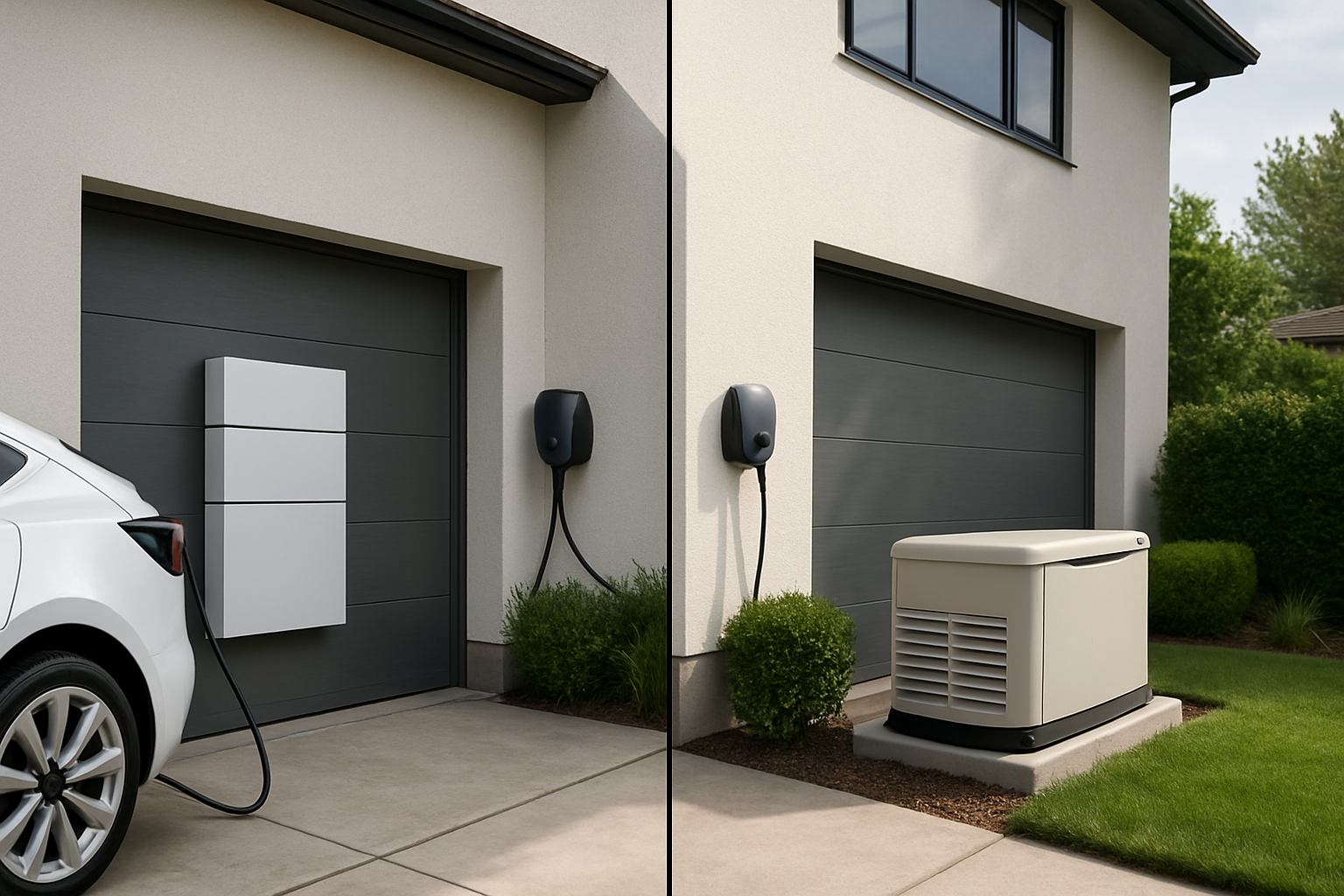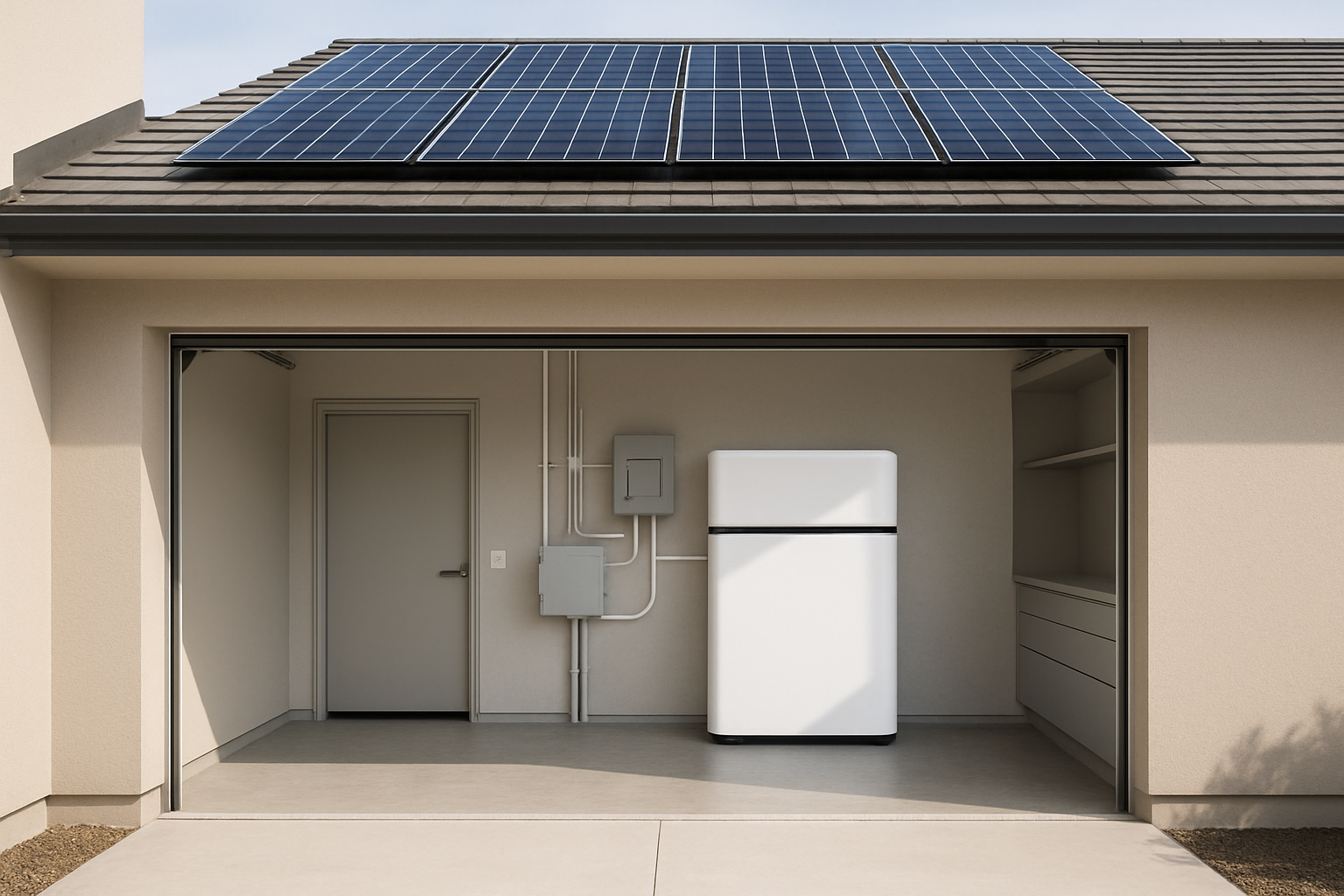When winter storms knock out power for days, your backup system faces its ultimate test. Sub-zero temperatures, ice accumulation, and fuel supply disruptions create challenges that separate reliable backup power from expensive disappointments. After experiencing multiple winter outages across different climates, the performance gap between battery backup systems and generators becomes crystal clear under extreme conditions.

Temperature Performance: When Cold Weather Strikes
Winter storms expose fundamental differences in how backup power systems handle extreme temperatures. Modern lithium iron phosphate (LiFePO4) batteries maintain 95% capacity down to -4°F (-20°C), with sophisticated thermal management systems that pre-warm cells before discharge. This temperature resilience stems from their stable chemistry and integrated heating elements.
Generators face multiple temperature-related challenges. Diesel fuel gels at 15°F (-9°C), while gasoline can freeze water condensation in fuel lines. Engine oil thickens, making cold starts difficult or impossible. Propane systems perform better but still experience reduced gas pressure and flow rates as temperatures drop.
| Temperature Range | Battery Performance | Generator Performance |
|---|---|---|
| 32°F to 0°F (0°C to -18°C) | 98-100% capacity | 85-90% efficiency |
| 0°F to -10°F (-18°C to -23°C) | 95-98% capacity | 60-75% efficiency |
| Below -10°F (-23°C) | 90-95% capacity | Start failures common |
Real-World Winter Performance Data
During the February 2021 Texas freeze, battery backup systems maintained consistent output while thousands of generators failed to start. Emergency services reported 347 generator-related service calls compared to just 23 battery system issues. The instant activation capability of batteries proved crucial when temperatures dropped 40°F in 12 hours.
Fuel Supply Vulnerabilities in Storm Conditions
Winter storms create cascading fuel supply problems that cripple generator reliability. Ice storms close gas stations, delivery trucks can't navigate frozen roads, and propane suppliers suspend operations during severe weather warnings. Your generator becomes useless when fuel runs out, regardless of its rated capacity.
Battery systems eliminate fuel dependency entirely. Once charged, they provide power regardless of external supply chains. Solar integration extends this independence - even limited winter sunlight can recharge batteries during multi-day outages. According to IEA research on renewable system integration, battery storage combined with solar PV provides enhanced grid support services and improved system reliability during extreme weather events.
Storm Duration Analysis
Winter outages average 12-48 hours longer than summer blackouts due to ice damage and access difficulties for repair crews. A typical 20kWh home battery system powers essential loads for 16-24 hours, while most homeowners store only 5-10 hours of generator fuel on-site. Refueling during active storms poses safety risks and often proves impossible.
Installation and Maintenance in Winter Climates
Indoor installation gives battery systems a decisive advantage in winter climates. Protected from snow, ice, and temperature extremes, batteries operate in controlled environments that maximize performance and lifespan. Smart thermal management maintains optimal operating temperatures automatically.
Generators require outdoor installation, exposing them to harsh winter conditions. Snow blocks air intakes, ice accumulates on fuel lines, and extreme cold makes maintenance difficult. Weekly exercise runs become problematic when temperatures stay below freezing for weeks.
Maintenance Requirements Comparison
- Battery Systems: Quarterly software updates, annual electrical connections check, 10-15 year lifespan
- Generators: Monthly oil changes, seasonal fuel stabilizer, carburetor cleaning, spark plug replacement, 8-12 year lifespan
Safety Considerations During Winter Storms
Carbon monoxide poisoning increases 300% during winter power outages as people use generators in enclosed spaces for warmth. Snow accumulation blocks exhaust vents, while desperate homeowners move generators closer to buildings. Emergency rooms treat dozens of CO poisoning cases after every major winter storm.
Battery backup systems produce zero emissions and operate safely indoors. No exhaust gases, no fuel vapors, no fire hazards from hot engine components. This safety advantage becomes critical when families shelter in place during multi-day winter storms.
Cost Analysis: Winter Storm Preparedness
Initial costs favor generators, but winter operating expenses shift the equation. Fuel costs spike during emergencies - propane prices can double, while gasoline becomes scarce. Cold weather reduces fuel efficiency by 15-25%, requiring more frequent refills.
| System Type | Initial Cost | Winter Fuel Cost (3 days) | Maintenance Cost (Annual) |
|---|---|---|---|
| 15kW Generator | $4,500-6,500 | $180-240 | $300-450 |
| 20kWh Battery + Solar | $18,000-22,000 | $0 | $50-100 |
IRENA's electricity storage valuation framework demonstrates that battery systems achieve cost parity with generators within 6-8 years when accounting for fuel, maintenance, and replacement costs.
Insurance and Warranty Considerations
Many homeowner insurance policies offer discounts for battery backup systems due to their safety profile and reduced fire risk. Generator installations may increase premiums due to fuel storage and carbon monoxide risks. Battery warranties typically cover 10 years or 6,000 cycles, while generator warranties rarely exceed 5 years.
Integration with Renewable Energy
Winter storms often coincide with extended cloudy periods, but even limited solar generation helps recharge battery systems. Modern inverters maximize energy harvest from available sunlight, while smart energy management prioritizes critical loads.
Generator-solar integration requires complex switching systems and often voids solar warranties. Batteries seamlessly integrate with existing solar installations, creating true energy independence. During the 2022 Christmas storm that left 1.7 million without power, homes with solar-battery systems maintained electricity while generator-dependent neighbors struggled with fuel shortages.
Making the Right Choice for Your Climate
Your local winter conditions should guide backup power decisions. Regions with frequent ice storms, extended sub-zero periods, or limited fuel infrastructure favor battery systems. Areas with mild winters and reliable fuel supplies may find generators adequate, though battery advantages in noise, emissions, and maintenance remain compelling.
Consider your household's critical power needs during winter outages. Medical equipment, heating systems, and food preservation require reliable power that batteries deliver more consistently than fuel-dependent generators. The peace of mind from silent, automatic backup power proves invaluable during stressful storm situations.
Future-Proofing Your Investment
Climate change increases winter storm intensity and frequency. The Department of Energy projects that extreme weather events will continue challenging traditional backup power solutions. Battery technology advances rapidly, with costs declining 15% annually while performance improves. Generators face increasing emissions regulations and fuel price volatility.
Smart battery systems provide grid services revenue opportunities, offsetting ownership costs through virtual power plant participation. This economic model doesn't exist for residential generators, making batteries increasingly attractive for long-term value.
Conclusion: Silent Reliability Wins Winter Wars
Winter storms reveal backup power system true capabilities under extreme stress. Battery systems excel through temperature resilience, fuel independence, silent operation, and seamless solar integration. While generators offer lower upfront costs, their winter vulnerabilities - fuel supply disruption, cold-start failures, and safety risks - make them less reliable when you need backup power most.
The data supports battery backup systems for winter storm preparedness. Their superior cold-weather performance, elimination of fuel logistics, and enhanced safety profile provide genuine peace of mind during extended outages. As battery costs continue declining and performance improves, the choice becomes increasingly clear for homeowners serious about winter resilience.





Leave a comment
All comments are moderated before being published.
This site is protected by hCaptcha and the hCaptcha Privacy Policy and Terms of Service apply.